Demo Video
Authors:
Fysal BeauferrisHarprabh Gill
Debprasad Mandal
Navjot Saran
Project description:
Origami Unlock: Our first design approach was
touch-based. The idea was to allow users to open their phones with a
sequence of origami folds as passwords. Dotted lines represent
folding locations on the paper. They divide the paper into separate
buttons. Hitting the wrong button or a button in the wrong sequence
starts the unlock process over. Every correct selection leads to an
animation that shows the paper folded over where the dotted line
was.The password entry completes after the last fold, showing the
completed origami figure for a moment. Then the phone unlocks.How we came up with it and why we chose it:
We started with each of us coming up with 10 initial sketches for our ideas.
We discussed them with one another and the origami idea was an easy favorite.
Most people aren’t familiar enough with origami to guess a password based on the correct fold sequence.
So we figured it's actually a pretty good idea for a phone unlock interface. Someone trying to break
into the user's phone wouldn’t even know the shape they’re going for. It would be fully secure with
limited attempts and customizable origami shapes but we kept it simple to keep the focus on showing
the design and idea.
Initial sketches Before The Origami Design:
While deciding on how we should design our touch-based unlock system. We had initially come up with 10 designs, those being a higher or lower game, a drawing unlock, an invisible section unlock, connect the dots, shape memory, origami, prompt answering, carry case style unlock, “Where’s Waldo?” style unlock, and a water level unlock. Out of all these ideas we eventually picked the origami unlock as it has a unique design which is visually appealing, while also having really good security as the user must know the pattern to unlock it.Initial Sketch#1
The idea presented in this sketch is to have the user solve a riddle. The riddle would be picked in advance by the user. They could choose to either create it themselves from scratch or use a preexisting one provided by me, the app developer. Answer the riddle correctly and the phone unlocks.

Initial Sketch#2
The idea presented in this sketch is to have the user craft an object out of paper. This process of using paper to create an animal or complex shape is called origami. Failure to craft the animal/object in the correct order would result in the user being locked out of their phone.

Initial Sketch#3
The idea presented in this sketch is to have the user pick which artist is their favourite. The owner of the phone would select their favourite artist out of two artists at a time in the unlock application settings beforehand. If they guessed correctly then they would move onto a different binary option of who their favourite artist is. Failure to guess correctly would lock themselves out of the their phone.
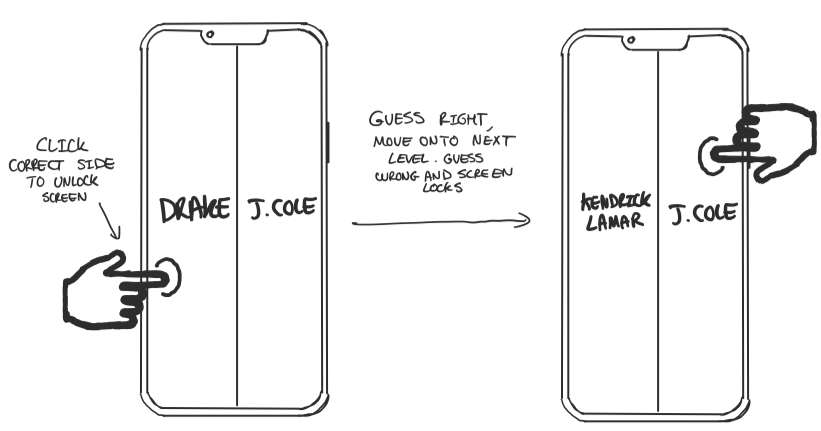
Initial Sketch#4
The idea presented in this sketch is for the user to guess a pattern correctly. The idea is simple in nature but could be scaled to add complexity. Every shape the user clicks will highlighted and a number indicating the position in the pattern of that shape will appear on the screen on the corner of the shape. Failure to guess correctly would lock themselves out of the their phone.
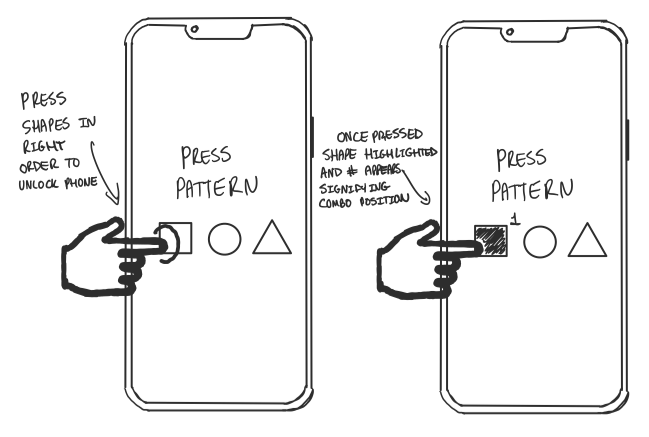
Initial Sketch#5
The idea presented in this sketch is inspired from a classic bike lock design. The user would click the arrows to move the number up or down. The user would then move their phone fast in one direction to simulate a tugging motion to attempt to unlock. Failure to guess correctly would lock themselves out of the their phone.
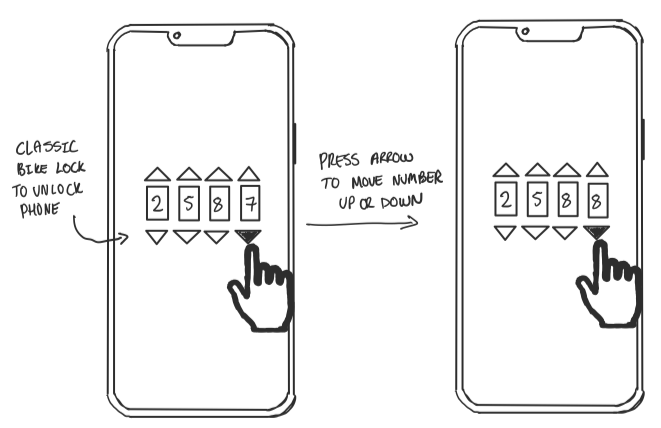
Initial Sketch#6
The idea presented in this sketch is inspired by a classic school lock. The user would swipe left and right on the screen to move the dial clockwise or counterclockwise. Follows the same rules as a standard lock. Example rules would be to turn twice clockwise to combo #1, turn once counterclockwise to combo #2. Lastly, go clockwsie to combo #3. The user would then move their phone fast in one direction to simulate a tugging motion to attempt to unlock. Failure to guess correctly would lock themselves out of the their phone.
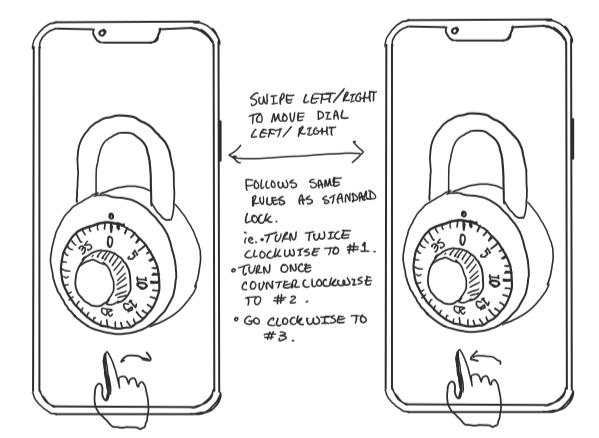
Initial Sketch#7
The idea presented in this sketch is to have the user find a hidden object in an image. The owner of the phone would know where the object is. The goal would be to make it extremly hard to guess and the user only have 2 attempts (incase they accidently click the screen once) to find the object hidden. Inspired by where's waldo. Failure to guess correctly in two guesses would result in the user being locked out of their phone.
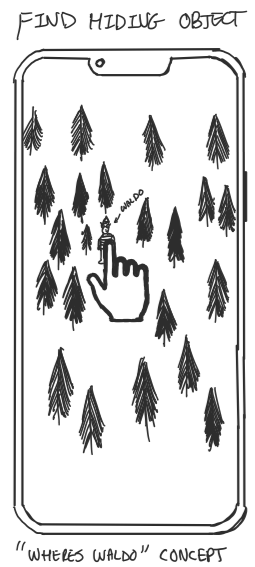
Initial Sketch#8
The idea presented in this sketch is to have the user draw a specific shape in sand. The owner of the phone would pick what the correct image to draw would be in advance to locking the phone. Failure to draw the correct image would result in the user being locked out of their phone.
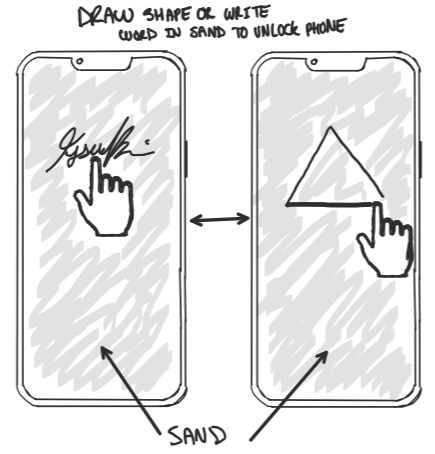
Initial Sketch#9
The idea presented in this sketch is to have the user correctly apply the correct amount of water each plant needs to live, the owner of the phone would know the correct answer in advance before setting the password. Failure to guess correctly would result in the user being locked out of their phone.
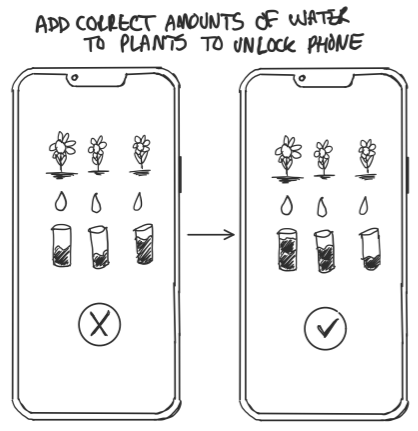
Initial Sketch#10
The idea presented in this sketch is inspired by preexisting touch simulation unlock designs where the user needs to drag their finger in the correct pattern of vertices and lines to unlock their phone. Failure to slide their finger in the correct position would result in the user being locked out of their phone.
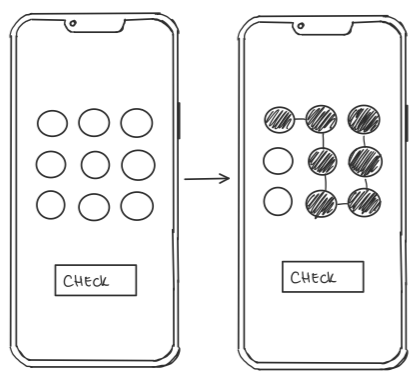
Detailed Sketches For The Origami Design:
After deciding to go with this idea for the touch based design
we developed our idea with detailed sketches. We each made sketches
along the design process to help develop our ideas. Detailed Sketch#1
To avoid accidental unlocks we decided to add a feature that requires the user to tap the screen at the bottom to begin unlocking the phone. This serves as the homescreen where the user can receive notifications and check the time as they normally can.
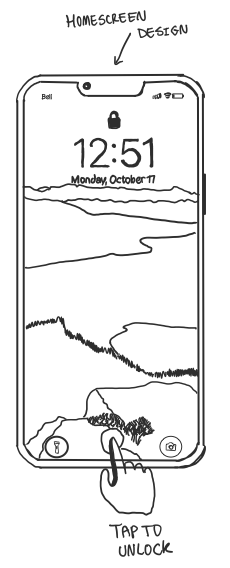
Detailed Sketch#2
After unlocking, the user's chosen password origami is displayed in its unfolded state. The fold lines for the first step are shown on the shape. Choose the right side to fold.
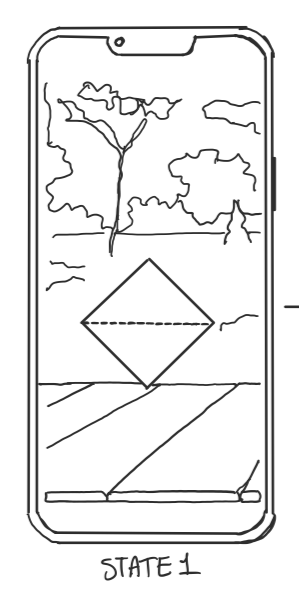
Detailed Sketch#3
After choosing the correct side, the process moves to step 2 of a given origami password. Choose the correct side to move onto step 3.
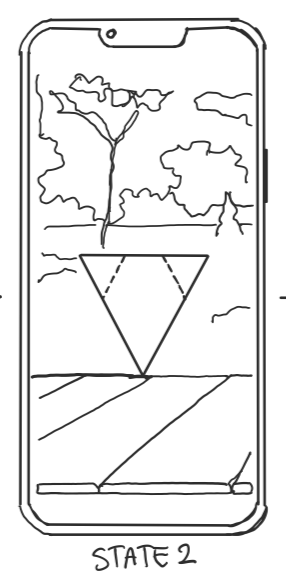
Detailed Sketch#4
Choosing the correct side shows the resulting shape with the paper folder over the line. Choosing the wrong side to fold at any moment throughout the unlock process restarts the whole process.
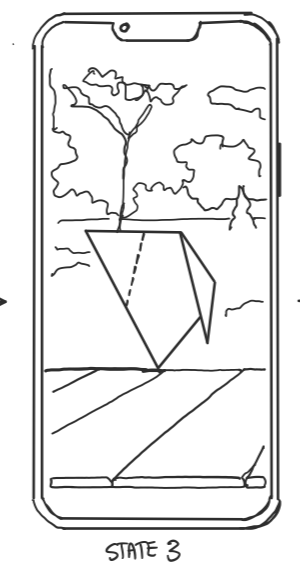
Detailed Sketch#5
Another correct selection! It is beginning to take a familiar shape.
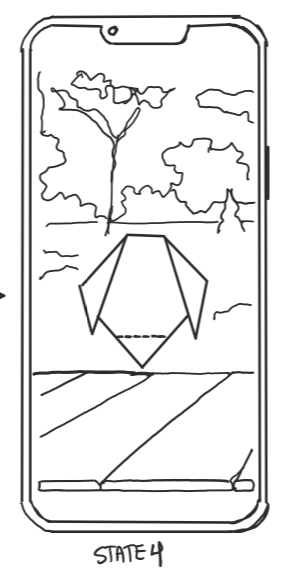
Detailed Sketch#6
Make another correct fold. Any incorrect selection results in the whole process restarting.
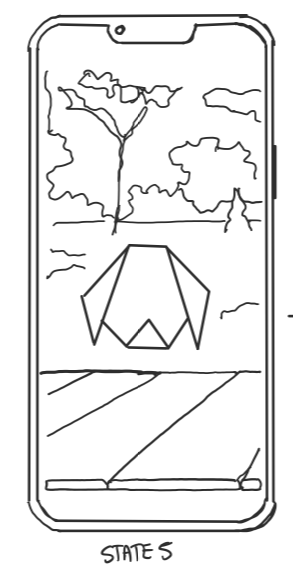
Detailed Sketch#7
After the final correct fold has been completed, the origami shape displays its figure for a moment before the phone unlocks.
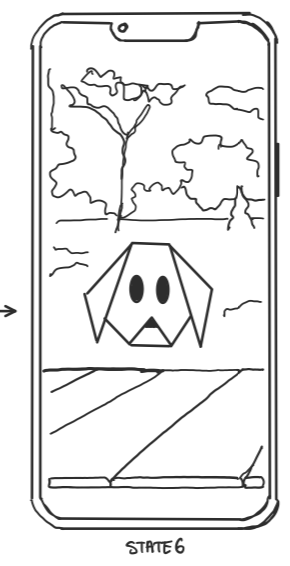
Detailed Sketch#8
We decided to add a scenic background to create an atmosphere for folding origami. Our idea for the design was to separate the unlock process into states. Each correct fold selection leads to the next state, while any incorrect selection returns the process to the first state.
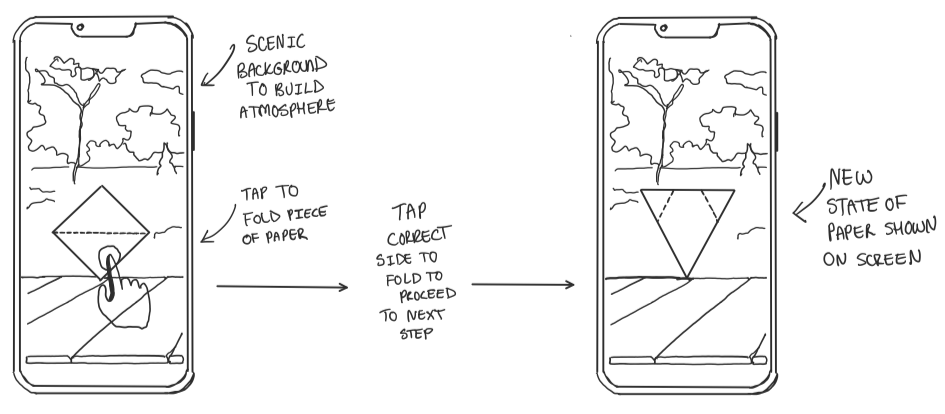
Detailed Sketch#9
This sketch shows the process returning the screen to the first state after an incorrect selection.

Detailed Sketch#10
We decided to add a face to our final origami design. This is a satisfying conclusion for the user after they have completed their password. The display pauses for a moment and then the phone unlocks.
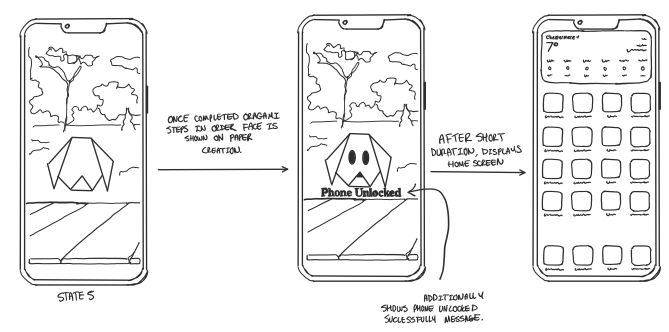
Limitations and Issues:
The unlock design is secure in the sense that most people don't know origami. Most default origami figures this design could provide would follow known patterns, however. If a non-authorized user decided to spy on an unlock, they could figure out the pattern from seeing the end result origami figure alone. An idea around this is to offer custom designs and fold sequences. Another issue is that someone could just guess repeatedly until they memorize the correct pattern. A password attempt limit immediately solves this issue. Accidental unlocks are extremely improbable because there are so many specific areas of the screen that must be tapped to unlock. Incorrect selections restart the process.